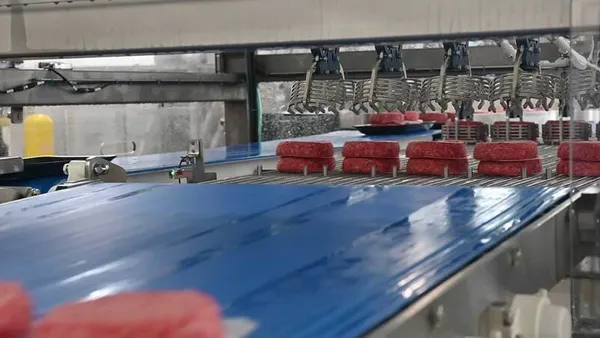Dive Brief:
- Executives from German manufacturing conglomerates Siemens, BMW and Schaeffler visited the U.S. last week alongside German Chancellor Angela Merkel to discuss a variety of potential business initiatives, The Wall Street Journal reported last week.
- Experts in worker retraining programs, the German CEOs shared suggestions for the types of training currently needed — and for what may come as robots make further incursions into the manufacturing industry.
- Siemens CEO Joe Kaeser reportedly offered to invest approximately $2 billion in specialized industry software to help train U.S. students in various programs for modern manufacturing positions. The company already employs 50,000 U.S. workers in its apprenticeship program.
Dive Insight:
Automation, trade and talent top the list of reasons for the manufacturing skills gap, and the meeting between German CEOs and President Trump sought to address all three.
The President campaigned to bring manufacturing jobs back to the U.S., often blaming unfavorable trade deals. Yet, the German Chancellor is an advocate for free trade and sought to present a different argument: bringing jobs back to the U.S. requires worker retraining programs.
After all, a combination of trade and technology may have decreased demand for low-skill labor, but in just three years the number of unfilled manufacturing jobs is likely to reach 3.5 million. The problem is not that jobs are unavailable, but rather the industry is facing a skills gap as demand for high-skill labor outpaces supply.
That is where worker retraining programs come in. Recent reports reveal that a high school education is often not enough to earn a job on the factory floor, with more employers seeking candidates with secondary education. In addition, as digitization and analytics changed the nature of supply chain management, more precise skills are being sought out among future employees. Mentorship programs, apprenticeships and professional certifications have risen to address this need, but the skills gap remains.
Retraining new and established workers is one aspect of the manufacturing employment conundrum, but attracting new talent is another. Many senior positions in the sector are currently filled by the Baby Boomer generation, which is nearing retirement. Meanwhile, millennials are not applying to fill those positions on pace.
Companies seeking to attract enough talent to fill the empty positions left by retiring baby boomers must reach out to millennials in order to draw the talent they need. Recognizing that the attention of a fresh population of future workers must be commanded, a variety of new recruitment methods should be employed.
Microsoft, for example, has created a "Grad Week" program, which seeks to offer training to 150 recent hires in supply chain management through direct interaction with executives in the area. Quick engagement with recent hires hungry for feedback and opportunity will improve the likelihood not only of retention but also of interest in the field.
While not every member of the 150 new hire team will likely wind up working in the supply chain, identifying those who will, and nurturing that interest, can go a long way toward filling those soon to be empty positions. Similarly, investing in current employees willing and able to advance their skills may prove a long-run solution to the talent crisis.













